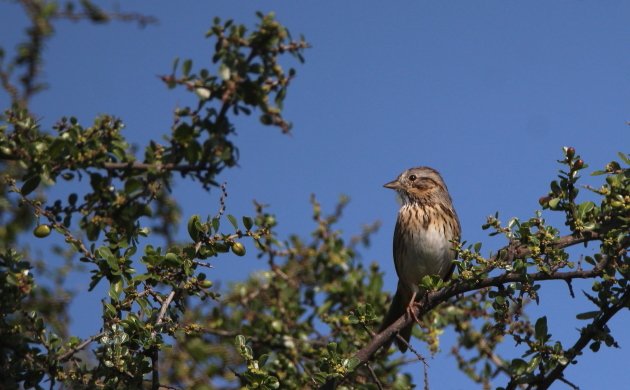
Over the past few months, I have attempted to introduce our readers to some of my favorite birding sites around my city of Morelia, Mexico. Along the way, I hope to give you an idea of what birding in Mexico is like. However, I had not yet spoken of one site which is especially dear to me: the area surrounding the church my wife and I pastor. In order to buy a decent-sized property, we went to the zone just beyond the urban area; and without planning it so, we ended up in a very birdy zone.
Much of the countryside surrounding Morelia is wooded, but our church property is surrounded by a kind of prairie. Since ours is a wet-summer monsoon climate, these savannah grasslands also feature many small, thorny, fire-resistant trees. Chief among these are three trees, known here as Huizaches (Sweet Acacia, Vachellia farnesiana), Granjenos (Spiny Hackberry, Celtis ehernbergiana), and Nopales (Prickly Pear, various species).
I make sure to bird here because the grasslands are my very best place to see up to 12 species of Sparrows, as well as Eastern Meadowlarks, House Finches, Lesser Goldfinches, and White-collared Seedeaters. But the area would not be home for more than 120 species, if it were not for those thorny trees.
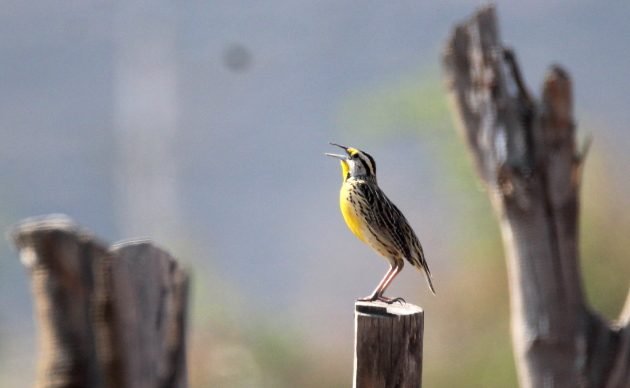 I come for the grass!.
I come for the grass!.
I love the Granjeno (pronounced grahn-HAY-no). Like most savannah plants, Granjenos are very spiny. But they stand out from their thorny neighbors by staying green all year, and by growing foliage so dense you cannot see into their centers. As a result, they are a favority hiding place for many birds. A fully-grown Granjeno can be the noisiest plant I know, alive with the sounds of crowds of hidden Brown-headed and Bronzed Cowbirds, Groove-billed Anis, and other birds.
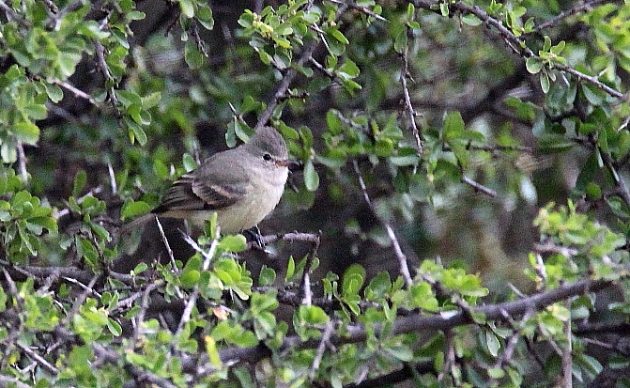 It’s always a treat to see a Northern Beardless-Tyrannulet. This one came for the Granjenos.
It’s always a treat to see a Northern Beardless-Tyrannulet. This one came for the Granjenos.
Granjenos also serve as a major source of food, especially during our winter dry season, when food is scarce. Their small red berries are favorites of Curve-billed Thrashers, Northern Mockingbirds, American Robins, several Orioles and Tanagers, and many other species. Humans like me enjoy eating them, too!
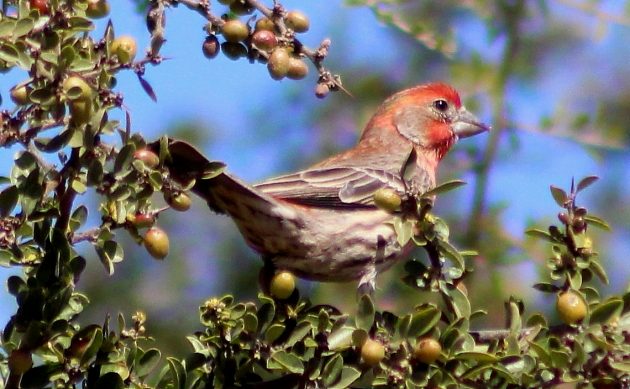 Sure, I will eat Granjeno fruits.
Sure, I will eat Granjeno fruits.
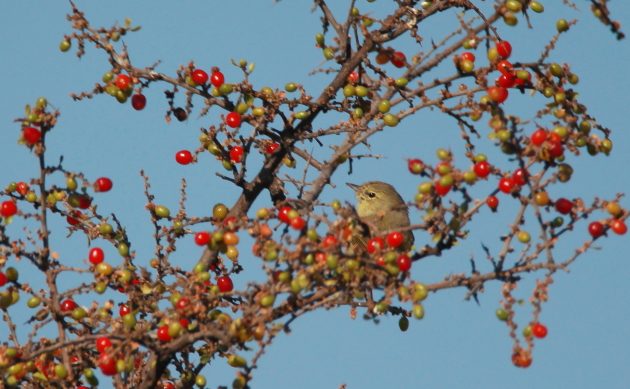 Orange-crowned Warblers will not eat these fruits. But they still love a nice Granjeno.
Orange-crowned Warblers will not eat these fruits. But they still love a nice Granjeno.
Our local Nopales (no-PAH-laes) include species that can grow as tall as 20 feet. They do not make good shelter, but their flowers are an important nectar source for Broad-billed and other Hummingbirds, and their juicy fruits attract many of the same species that eat Granjeno fruits. I suspect Prickly Pear fruits are one of the reason for Thrashers’ long, thin bills, so they can eat them while avoiding their fine, irritating spines. I love Prickly Pear fruits, called “tunas” here. But I definitely prefer to buy them, with those spines already taken off!
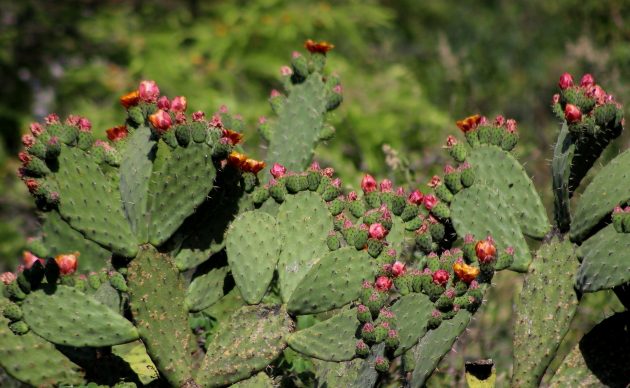 Admit it… Could you resist this, if you were a Hummingbird?
Admit it… Could you resist this, if you were a Hummingbird?
The Huizache (wee-SAHTCH-ae) is an interesting tree. A legume, it fixes nitrogen in the soil. Dig it up, and you will get a noseful of the foul smell of its wood, and it will probably resprout from any bit of root remaining anyway. It is so spiny that its branches are often used here for informal, but impenetrable, fencing.
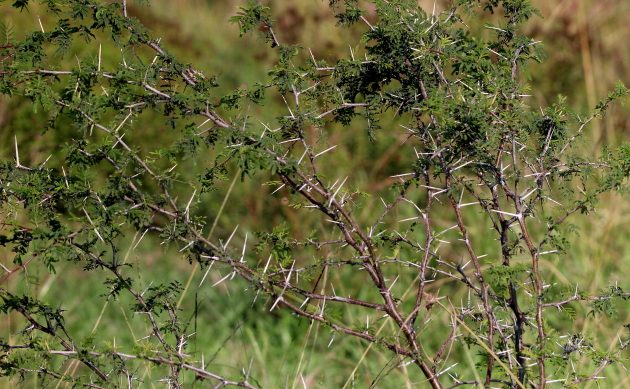 Really, really spiny…
Really, really spiny…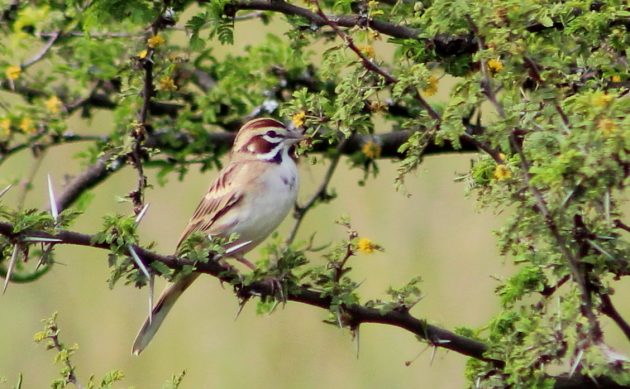
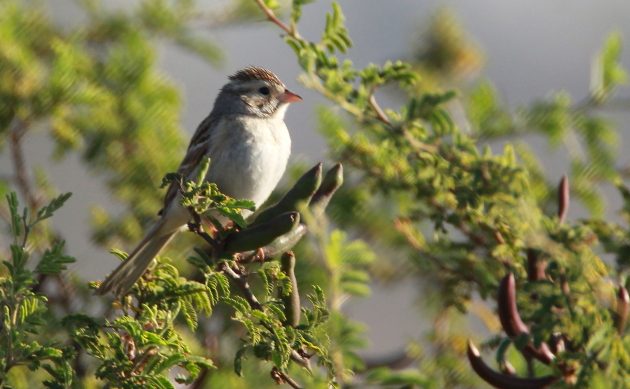 …which suits Lark and Clay-colored Sparrows just fine!
…which suits Lark and Clay-colored Sparrows just fine!
I must confess, when we first fenced in our church lot, I tried to remove most of the Huizaches. I wanted to make room for more interesting native species, like pines, oaks, and especially, Granjenos. But my first two years’ attempts at establishing Granjenos or starting them from seed were almost complete failures. Then I discovered where Granjenos (and Nopales) like to begin their lives: On the northern, shady side of the more resistant Huizaches! Yes, the scroungy, spiny, but supremely tough Huizache has a tender side, as our biome’s favorite “nurse plant”.
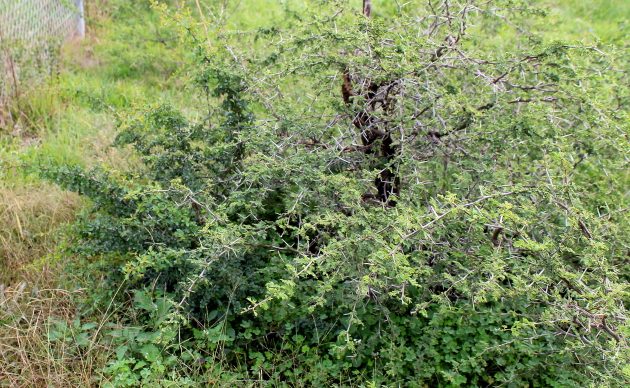 This small Huizache shelters an even smaller Granjeno, to its left. But the Granjeno will eventally outgrow it.
This small Huizache shelters an even smaller Granjeno, to its left. But the Granjeno will eventally outgrow it.
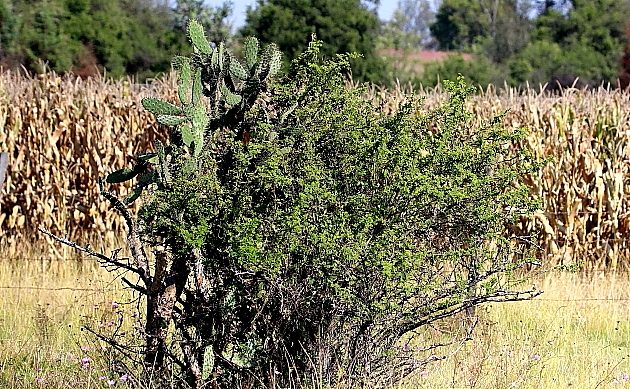 In this case, this more mature Huizache shelters a Prickly-Pear… on the north side, of course.
In this case, this more mature Huizache shelters a Prickly-Pear… on the north side, of course.
So now, I say: Long live Huizaches!













Thanks for featuring the plants! No plants = no birds so I love to hear about the plants that keep the birds fed and sheltered. Your posts are always interesting – thank you.
En Guanajuato también hay estas plantas; en sí, viví junto a ellas y amo los granjenos?